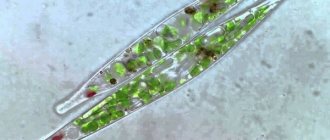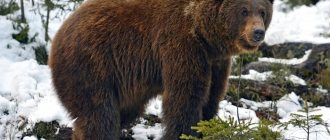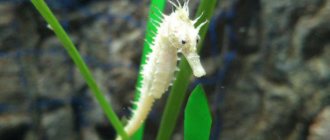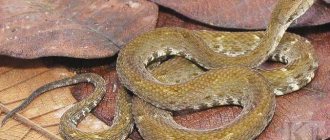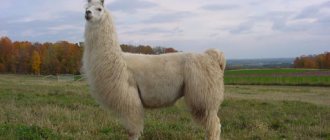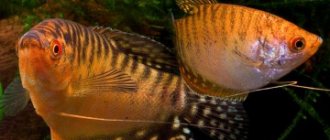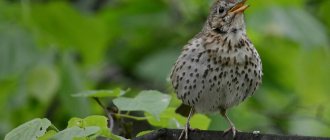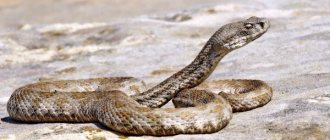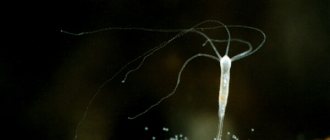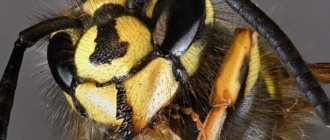- Structure
Life on our planet is distinguished by an incredible diversity of all kinds of living organisms, sometimes having an incredibly complex structure. All this diversity of life: from the simplest insects and plants to us humans (perhaps the most “complex organisms”) consists of cells, these small bricks of living matter. And if man is the crown of biological evolution, then it will be very interesting to consider its beginning: the simplest single-celled organisms, which, in fact, at the dawn of history became the ancestors of all living things. Ciliate slipper (along with
Amoeboia euglena viridae) is one of the most famous simple single-celled creatures. What is the structure of the ciliate slipper, its habitat, how it feeds and reproduces, read about all this further.
Description and characteristics. What does a ciliate slipper look like?
In fact, the ciliate slipper is not at all one simple unicellular organism; behind this name there are more than 7 thousand different types of ciliates. They all share a shape that is somewhat reminiscent of the sole of a shoe, hence the “shoe” in the name. (However, the “slipper” in the name has taken root only here; in English, “slipper ciliate” is listed under the Latin name “Paramecium caudatum”, which translates as “paramecium tailed”).
Also, all ciliates have the ability to osmoregulate, that is, they can regulate
pressure of the internal environment of your body. In this matter, they are helped by two contractile vacuoles; they compress and unclench, thus pushing excess fluid out of the body of the ciliate.
The sizes of the ciliates of the slipper range from 1 to 5 tenths of a millimeter.
Photo of the ciliate slipper.
Although the ciliate slipper is the simplest single-celled creature, that is, its entire body consists of only one cell, nevertheless, it has the ability to independently breathe, feed, reproduce, and move. In other words, it has all the functions and abilities that every other animal has. Moreover, among other simple unicellular organisms, the ciliate slipper is the most complex. In particular among her
There are organelles (cell elements) that are not found in its other unicellular “colleagues”: amoebas and euglena.
Among the “advanced” organelles of ciliates one can note:
Possessing a mouth, powder, and digestive vacuoles, ciliates practice a holozoic type of nutrition, that is, they capture organic particles inside their body.
This is what a ciliate looks like under a shoe
microscope.
Interesting fact: the breathing of the ciliate slipper is carried out not with the help of the mouth, but with the whole body:
Oxygen enters the cytoplasm through the cell covers, where with its help, organic substances are oxidized, converted into carbon dioxide, water and other compounds.
Another amazing feature of ciliates, which makes it “the most complex of the simplest”, is the presence of as many as two nuclei in its cell. One of the nuclei is large, it is called a macronucleus, and the second small one is called a micronucleus. Both cores store the same information, however, if a large core is constantly in operation and its information is constantly exploited, which means it can be damaged (like running books in a library). If such damage occurs, then a second small core is provided just for this case, serving as something of a reserve in case of failure of the main core.
As you can see, our today's heroine, the slipper ciliate, is the most perfect among the simplest single-celled organisms.
Application in aquarium keeping
If we consider the use of ciliates in aquarium farming , then in terms of raising fry, these single-celled organisms are of great benefit. The ciliate slipper is used as live food and is excellent as a starter food for some types of small fish. Precisely for their fry.
Infusoria slipper in aquarium
On a note! It is worth noting that many fry do not recognize anything at all except small ciliates. Therefore, nothing else suits them as food.
Feeding the fry
To provide aquarium pets with a sufficient amount of live food, many aquarists decide to breed ciliates themselves. Fortunately, this is a simple process that requires minimal cost and effort. But the result will not take long to arrive. Even a novice aquarist can cope with cultivation at home.
Structure
Despite its apparent simplicity, the structure of ciliates is by no means simple. On the outside, it is protected by a thin elastic shell, which also helps the body of the ciliate maintain a constant shape. The protective supporting fibers of the ciliate are located in a layer of dense cytoplasm, which is adjacent to the shell.
In addition, the ciliate cytoskeleton includes various microtubules, alveolar cisterns, basal bodies with cilia, fibrils and filamen and other organelles.
Due to the presence of a cytoskeleton, ciliates, unlike amoeba, cannot arbitrarily change the shape of their body.
Schematic drawing of the structure of ciliates.
Advantages and disadvantages of “live dust”
Breeders prefer ciliates to the abundance of feed on the modern market for a number of reasons:
- It does not pollute the aquarium. Any organisms not eaten will simply remain there without disturbing the system.
- Contains a lot of nutritious protein, which helps the fry grow faster.
- Due to its size it is suitable for the smallest inhabitants of the aquarium.
- Breeding single-celled animals does not require large financial investments.
- Any child can grow a colony of ciliates.
- The risk of infection getting into the aquarium is almost zero.
There are few disadvantages to this food. Among them:
- unpleasant odor of organic waste used for cultivation;
- cultivation takes 7 to 10 days;
- It is difficult to move food without the rotten water in which it grows into the aquarium.
Despite the difficulties that may arise during cultivation, experts advise using single-celled animals instead of dry food. Because You need to feed the fry 6-8 times a day, it is difficult to calculate the dosage of food, and the abundance of food will harm other fish and greenery in the aquarium, and pollute the water.
With shoes everything is much simpler; they will not die, but will be eaten by other fish.
Classification
Also, the structure of the ciliate depends on its class. This is how two classes of slipper ciliates are distinguished:
- ciliated ciliates,
- sucking ciliates.
Let's look at them in detail below.
Ciliated ciliates
They are so named because their body is covered with small eyelashes, also called cilia. The length of the eyelash is no more than 0.1 micrometer. Eyelashes can either be distributed evenly over the body of our simplest beauty, or be collected in bunches, which biologists call “cirrhs”. The eyelashes themselves are a bundle of fibrils, which are thread-like proteins.
Each ciliated ciliate can have several thousand of these eyelashes. The movement of ciliates is also carried out using eyelashes.
Sucking ciliates
Sucking ciliates do not have not only cilia, but also a mouth, pharynx and digestive vacuoles, so characteristic of their “hairy” relatives. But they have peculiar tentacles, which are plasma tubes. It is these tentacle-tubes that perform the function of the mouth and pharynx in sucking ciliates, as they capture and conduct nutrients into the endoplasm of the cell.
Without eyelashes, sucking ciliates are unable to move. However, they don’t need this, having a special suction cup leg, they attach to the skin of some crab or fish and live on them. There are only a few dozen species of sucking ciliates, compared to thousands of species of their ciliated counterparts.
Features of the movement of protozoa
Single-celled organisms are also capable of moving (slipper ciliates, green euglena, common amoeba). To move through the water column, each individual is endowed with specific organelles. In protozoa, such organelles are cilia, flagella, and pseudopods.
Euglena green
Euglena green is a representative of the protozoa of the flagellate class. The body of euglena is spindle-shaped, elongated with a pointed end. The organelles of movement of Euglena greena are represented by a flagellum, which is located at the blunt end. Flagella are thin outgrowths of the body, the number of which varies from one to dozens.
The mechanism of movement using the flagellum differs in different species. Basically this is a rotation in the form of a cone, the top of which faces the body. The movement is most effective when the cone apex angle reaches 45°. The speed ranges from 10 to 40 revolutions per second. In addition to the rotational movement of the flagellum, its wave-like swaying is often observed.
This type of movement is typical for monoflagellate species. In polyflagellates, the flagella are often located in the same plane and do not form a cone of rotation.
The microscopic structure of flagella is quite complex. They are surrounded by a thin shell, which is a continuation of the outer layer of ectoplasm - the pellicle. The internal space of the flagellum is filled with cytoplasm and longitudinally arranged filaments - fibrils.
The peripherally located fibrils are responsible for movement, while the central fibrils perform a supporting function.
Ciliate slipper
The ciliate slipper moves due to the cilia, making wave-like movements with them. Points forward with the blunt end.
The cilia move in one plane and make a direct blow after full straightening, and a return blow in a curved position. The blows come sequentially one after another with a slight delay. While swimming, the ciliate performs rotational movements around the longitudinal axis.
Cilia of ciliates slippers
The shoe moves at a speed of up to 2.5 mm/s. The direction changes due to the bends of the body. If there is an obstacle on the way, then after the collision the ciliate begins to move in the opposite direction.
All cilia of ciliates have a similar structure to the flagella of green euglena. The cilium at the base forms a basal grain, which plays an important role in the mechanism of movement of the body.
In some ciliates, the cilia are connected to each other and thus allow them to develop greater speed.
Ciliates are highly organized protozoa and they carry out their motor activity through contractions. The body shape of a protozoan can change and then return to its previous state. Rapid contractile movements are possible due to the presence of special fibers - myonemes.
Common amoeba
Amoeba is a fairly large protozoan (up to 0.5 mm). The body shape is polypodial, due to the presence of multiple pseudopodia - these are outgrowths with internal circulation of the cytoplasm.
In the common amoeba, the pseudopodia are also called pseudopods. Directing the pseudopods in different directions, the amoeba develops a speed of 0.2 mm/minute.
The organelles of protozoan movement do not include the cytoplasm, nucleus, vacuoles, ribosomes, lysosomes, ER, and Golgi apparatus.
Please rate the article. We tried our best:)
Habitat
Slipper ciliates usually live in shallow freshwater bodies of water with stagnant water and rotting organic matter. They need standing water so as not to overcome the force of the current, which will carry them away, which is why there are no ciliates in rivers. In shallow reservoirs, the Sun warms the water sufficiently, and rotting organic matter serves as a source of food for them. By the way, by the saturation of a particular reservoir with ciliates, one can judge the degree of its pollution; the more of them, the more polluted the reservoir.
But ciliates do not like salt water, so they are not found in the seas and oceans.
Types of ciliates
It is assumed that there are up to 30 thousand species of ciliates; the calculations use an average value of 8-9 thousand. The ratio among them of parasitic, free-living and commensal is also relative. Approximately 70% of ciliates are considered free-living.
Ciliates parasites
In addition to ordinary ciliates, there are parasitic species that can cause harm to creatures living near them. Among them there are categories that parasitize the body of fish. These harmful single-celled organisms cause diseases that can kill fish. The most common diseases: downy mold, milk disease, Tetrahymena.
Attention! Such parasites live in home aquariums and affect fish with weak immunity.
Ciliates for fry
Aquarists value the shoe for its assistance in the process of growing fish. Single-celled is the smallest food possible, suitable for all types of small fish babies. A real salvation for the owners of capricious fry, who do not feed on anything other than ciliates.
Ciliates parasites
Ciliates - food for fry
Nutrition
What does the slipper ciliate eat? The nutrition of ciliates depends on its class. Thus, sucking ciliates are true predators of the unicellular world: the source of their food is other smaller unicellular organisms, which, to their misfortune, swim by. With their tentacles, sucking ciliates grab other single-celled organisms. Initially, the victim is captured by one tentacle, and then other “brothers” come to the table. The tentacles dissolve the cell membrane of the victim and absorb it inside.
But the ciliated ciliate is “vegetarian” in this regard; its food source is usually unicellular algae, which are captured by the oral recesses, from there they enter the esophagus, and then to the digestive vacuoles. Processed food is thrown out through the powder.
An interesting fact: in the mouth of the ciliated ciliate there are also cilia, which, when swaying, create a current, which carries food particles into the oral area.
Selection
The function of the excretory organs in the slipper ciliate, just like in other protozoa, is performed by contractile vacuoles. The slipper ciliates have two contractile vacuoles - at the anterior and posterior ends of the body. Each contractile vacuole consists of a central reservoir and 5-7 tubules directed towards it. Harmful substances and metabolic products in dissolved form first enter the tubules, and then collect in the central reservoir and are pushed out. The entire cycle of accumulation and removal of metabolic products, as well as excess water, occurs once every approximately 10-20 seconds.
Reproduction
Reproduction of ciliates can be either sexual or asexual - through cell division.
- Sexual reproduction: with it, two ciliates merge with their lateral surfaces, while the membranes between the fused surfaces dissolve, and a kind of cytoplasmic bridge is formed. Through this bridge, cells exchange nuclei. Large nuclei completely dissolve, and small ones divide twice. Then, of the resulting four nuclei, three disappear, and the remaining nucleus is again divided into two. The exchange of remaining nuclei occurs via a cytoplasmic bridge. From the resulting material, newly born nuclei, both large and small, arise. Then the ciliates disperse from each other.
- Asexual reproduction of ciliates through division is much simpler. With it, both cell nuclei are divided into two, like other organelles. Thus, from one ciliate, two are formed, each with a full set of necessary organelles.
How does it move?
The ciliate slipper actively moves with the help of its special cilia, called organelles in science. There are about 15 thousand of them on the surface of one cellular organism. This can be seen under a microscope, looking at a model of a single cell.
Thanks to the clearly organized activity of organelles (they are also called trichocysts), the body rapidly moves like a ship on oars or a pendulum. The movement is fast but smooth.
The organelles quickly rise and then return to their previous position. A lot of such movements happen in one minute. The ciliate moves forward with its blunt tip and turns its body around its axis.
Recommended reading and useful links
- Ehrenberg CG Dritter Beitrag zur Erkenntniss grosser Organization in der Richtung des kleinsten Raumes (German) // Abhandlungen der Koniglichen Akademie der Wissenschaften zu Berlin. Aus dem Jahre 1833: magazine. - Leipzig, 1835. - S. 268-269, 323.
- Ehrenberg CG 502. Paramecium caudatum, geschwanztes Pantoffelthierchen // Die Infusionsthierchen als volkommene Organismen. - Leipzig, 1838. - P. 351-352.
- Polyansky Yu. I. Subkingdom Protozoa, or Single-celled (Protozoa) // Animal Life / ed. Yu. I. Polyansky, ch. ed. V. E. Sokolov. — 2nd ed. - M.: Education, 1987. - T. 1. Protozoa. Coelenterates. Worms. - P. 95-101. — 448 p.
- Warren, A. (2015). Paramecium caudatum Ehrenberg, 1833. In: Warren, A. (2015) World Ciliophora Database. — WoRMS — World Register of Marine Species
What does it eat?
This type of organism is classified as heterotrophic organisms, since it feeds on formed organic elements supplied through the natural habitat.
It feeds on bacteria with miniature plant species that are located in muddy and dirty water. The ciliates do this with specialized contractile vacuoles. The place of their formation is the cytoplasm.
Feeding occurs through the cell's mouth, a small depression in the middle of the body. Through the mouth, food is directed into the conditional esophagus and moves into the cytoplasm, absorbing food in a kind of digestive contractile vacuole.
It is there that food is broken down by hydrolytic enzymes and enters the entire body, saturating the single-celled body with useful microelements. What the ciliate does not digest, it excretes through a small depression at the back, called powder.
Video
And finally, an educational video on the topic of our article.
Author: Pavel Chaika, editor-in-chief of Poznavaika magazine
When writing the article, I tried to make it as interesting, useful and high-quality as possible. I would be grateful for any feedback and constructive criticism in the form of comments on the article. You can also write your wish/question/suggestion to my email [email protected] or Facebook, with respect, the author.
Author page
This article is available in English -
Paramecium Caudatum – the Most Complex of the Simplest.
How to cultivate ciliates at home
Growing shoes can take place in ordinary three-liter jars. It is easy to monitor the state of the crop, select the amount of feed, and the glass walls perfectly transmit the necessary sunlight.
Before starting the culture, the container must be prepared - rinsed with saline or soda solution, filled 2/3 with boiled water, and allowed to cool to room temperature.
An individual ciliate is placed in the settled water; it can be purchased or separated from the aquarium water. It is desirable that the temperature in the room reaches 22-26 °C, so the colony will grow to the maximum number of individuals - 40 thousand/1. It is recommended to ventilate the container; in water with oxygen, the ciliates lie on the bottom, and if there is no oxygen, they float out, which helps to track the number of individuals.
Growing shoes in a jar
There are several ways to breed ciliates:
Periodic addition of feed.
We fill the finished jar with ciliates and food; regular yeast, without impurities, will do. They are diluted with boiling water and fed drop by drop into the cultivator. At the beginning of the process, a few drops of the mixture will be required, which will cause the water to become slightly cloudy. The dosage increases in proportion to the number of ciliates. Feeding is carried out every other day.
Launching the original culture into pre-made feed.
This method will require dried peels of ripe bananas, carrots, potatoes, lettuce leaves, etc. bacteria will breed on them, which in the future will become food for ciliates. The ingredients need to be washed with water and placed in a jar. Over the next few days, the water in the jar will become cloudy and begin to smell unpleasant, which indicates the active growth of bacteria. After a week, you can release a shoe there, which within a week will fill the entire cultivator. It’s fashionable to start feeding the fry with it.
Ripe banana peel
The shoes are not picky about food; they can easily be fed with food from the kitchen. They eat foods of plant origin, dairy products, fish food, and liver. Before feeding, food should be dried and served in a cultivator in gauze, in 2-3 cm cubes.
You can make an infusion of hay. For a liter of water you will need 10 g of hay, put it in boiling water and cook for 20 minutes over low heat. All microorganisms die during this time, leaving only bacteria, which the ciliates feed on. The tincture is left in a warm place for several days to give the bacteria time to multiply. This method of complementary feeding is called hydrolysis yeast. They are applied once a week, at the rate of 1 g per 10 liters.
Note! Since single-celled animals feed on lactic acid bacteria, food for ciliates can be made from milk and products that contain it. You need to feed 2 drops per week. When feeding live dust, it is important to observe moderation and not overfeed single-celled animals. If there are too many bacteria in the cultivator, the shoes will die due to lack of oxygen.
“Living dust” with rotifers
The principle of breeding rotifers is almost identical. The culture can be found in the store, or caught in the nearest body of water; it is important that larvae and invertebrates are not caught along with the rotifers.
During breeding, daylight hours should last at least 10 hours. Rotifers live for less than a month, after which it is necessary to replace part of the water in the container and fill it with new cysts.
Meaning in nature
The ciliate slipper is an important single-celled organism for nature and soil. It increases the level of fertility in the soil, which helps irrigated lands in the south of the planet receive a rich harvest.
However, those single-celled organisms that live in river reservoirs with a large number of fish negatively affect them. They cause diseases and mass mortality in fish.
A lot of information and interesting facts have been collected around this single-celled organism. One of the positive properties of a single-celled microorganism is that it cleanses the reservoir well. Destroys bacteria and microscopic species of algae. Participates in the food chain because it is considered food for other animals.
Interestingly, ciliates today are also excellent food for aquarium fish. Therefore, people actively breed them to feed their pets.
